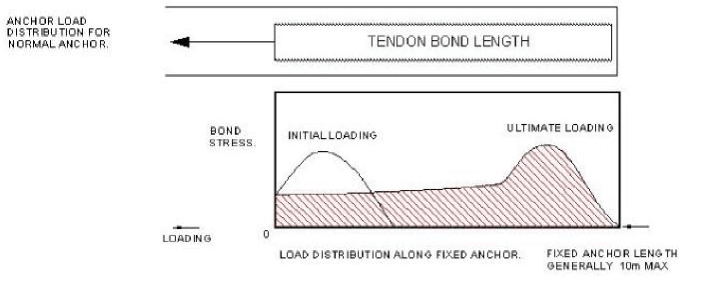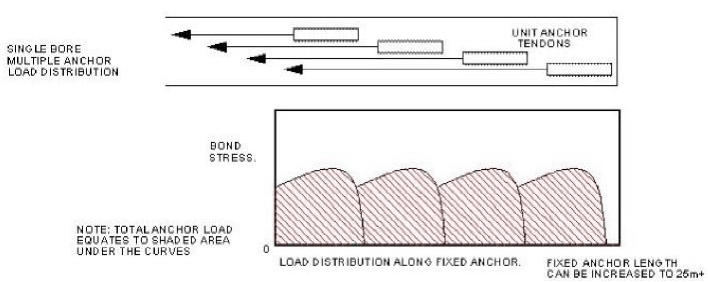Stronger by Design
An anchor tendon with a 8m fixed length in soil or rock, will, at test load, need to extend some 25mmat the proximal end of the fixed length before any load will be transferred to the distal end of the tendon. It is unusual for the elastic behaviour of the grouted soil around the anchor tendon to be compatible with the elasticity of the tendon and allow a uniform distribution of load along the fixed length. Thus, itis widely acknowledged that, in the majority of circumstances, debonding at the tendon/grout or the grout/ground interface must occur as anchor load increases and prior to any load being transferred to the distal end of the fixed length. This phenomenon is commonly known as progressive debonding and is associated with grossly non-uniform distribution of bond stress along the fixed length at all stages of loading. Information has been published by a multitude of researchers on this topic.

Progressive debonding generally results in a highly inefficient use of the in situ ground strength; in the load condition where the ground strength deep in the fixed length is being utilised, the ground strength above has been exceeded and only a residual strength is available there at the anchor soil interface (Fig 1). However, a system that can transfer the load simultaneously to a number of short lengths in the fixed anchor bore without the occurrence of progressive debonding, will mobilise the in-situ ground strength efficiently and result in a considerable increase in anchor capacity (Fig 1). This is the principle of the single bore multiple anchor.
